|
Keeping chickens and other poultry in winter isn’t difficult but it does require some preparation as repairing or setting up fences in 3ft deep snow or scrambling with extension cords and heat lamps to prevent frost bite in sub zero conditions isn’t easy. Each of the next 6 weeks, I’ll focus on one aspect of caring for chickens and ducks in winter The main things to prepare for are:
Managing Snow Load and Depth on Shelters and FencesLike most things, snow can be both a pleasure and a pain. Beautiful but difficult to deal with when it piles up. It’s fitting that I am late with writing this post because of heavy snowfall. This last few days we got almost 1.5 feet of snow with more falling for the next day, and for days after. To manage all this snow, you need more than a shovel, more than a plow; you need to plan for it, to have structures and fencing that can handle the weight and give you access to move the snow away if needed. Since chicken runs are usually covered to protect them from hawks and bobcats, having to shovel the snow out is not easy. No just throwing it over the fence. Instead you have to move it out the doorway. It’s better to keep the snow out in the first place. This can involve a tarp or sheet of plastic to cover the run, but if you expect more than just a dusting of snow, you need to support it from the weight of all that snow. And just like homes in snow-heavy regions don’t have flat roofs, its best to build your structures so that they shed the snow they accumulate on their own (or with a little help).
If you get a lot of snow, you will also want to consider the piles that accumulate next to the structures that were built to shed it. I keep each run about 4 feet apart so I have enough room to walk between and for the snow to shed off the run but not engulf them from the sides. Also, consider those sloped roofs. The snow can fall off quickly and can easily bury a tiny hen in an avalanche. Even if you saw it happen, they would probably be crushed (chicken bones are hollow as well) and even then they would suffocate in a few minutes. Tip: It's not only roofs that create 'avalanches' but also trees, especially conifers. Their wide branches and needles will collect snow until it is heavy enough to bend that branch and all the snow drops. Chickens will naturally want to shelter under them, but keep them away until heavy accumulations have cleared. If your snow is going to stick around awhile, it is important to build doors and gates with a tall enough threshold to not get blocked by compacted snow. All of my runs are built on 2X4s on their side. The barn door is about 10” off the ground, and any exterior access to huts or coops is above ground level (sometimes I just raise a hut by putting it on some bricks). Snow is heavy and takes time and energy to move, so limit how many paths you need to keep clear by carefully placing your structures. No matter what I have to keep a path to the barn, so I placed each coop and run along that path so I don’t have to loop through the field to clear the access to the chickens (& ducks) and can easily keep a path wide enough to pull the ‘tea trolley’ filled with water and food each morning. With a little planning before the snow piles up, you can keep your chickens happy and your sanity. And don’t worry about keeping every speck of snow away from them. They love to eat it, just like every child, dog, and other animals.
Next week, I’ll describe how I keep their coops clean when everything is frozen, even their poop (and sometimes the eggs)! -Farmer Meg: chicken herder, cat wrangler, duck whisperer, dog walker, vegetable plucker, and flower buncher.
0 Comments
Keeping chickens and other poultry in winter isn’t difficult but it does require some preparation as repairing or setting up fences in 3ft deep snow or scrambling with extension cords and heat lamps to prevent frost bite in sub zero conditions isn’t easy. Each of the next 6 weeks, I’ll focus on one aspect of caring for chickens and ducks in winter The main things to prepare for are:
Proper Shelter from Harsh ConditionsChickens (& especially Ducks) have a much larger range of temperature they are comfortable in than humans. Their smooth outer feathers and fluffy down keep them warm; a good thing for those chickens that live in area with cold winters. They actually tolerate cool to cold temperatures much better than they do high temperatures. The tiny daughters (& sons) of dinosaurs
Even with their greater tolerance range, they won’t like all weather. Rain. Wind. Hail. These are the main ones they would rather stay away from. Rain: While hens won’t mind a slow, gentle drizzle and will gladly stay out foraging, they don’t want to get soaked to the skin and neither do you because it is their feathers that keep them warm and pretty dry. They should always have a dry, covered place to go if they choose. Wind: They literally don’t like their feathers being too ruffled. While it doesn’t need to be a completely sealed box (its actually better it isn’t since ventilation is very important for poultry), it should have enough solid walls, or partial walls, that they can hunker out of the wind and stay warm. Hail: I mention hail separate from rain because while you could use a tarp or sheet to keep rain away, you need more substantial roof to handle hail. Plus, they really don’t like hail, so all will want to be under the cover at once and it needs to be big enough for them to all shelter comfortably. While having the shelter big enough for them to all stay inside comfortably, it can be helpful to no make it too big, especially if you frequently get subzero temps. The larger the shelter, the more effort and energy to heat it. But too small and the hens can’t choose to self-regulate their own temps. Instead of heating the whole space, I like to hang a heat lamp above one half of the perches so the hens can sit right under it if they really wanna warm up or away to cool down. I sign that they are cold is if they all sit underneath it.
Ducks are pretty similar in their needs to chickens, just don’t be surprised to see them share a tub of water with tiny icebergs in frigid conditions.
Next week, I’ll describe how I keep the snow from swallowing them and frustrating me! -Farmer Meg: chicken herder, cat wrangler, duck whisperer, dog walker, vegetable plucker, and flower buncher. |
AuthorI'm Farmer Megan with a life full of cackles, clucks, quacks, weeds, crazy kitten, and one tiny, senior, blind dog. Archives
May 2024
Categories
All
|
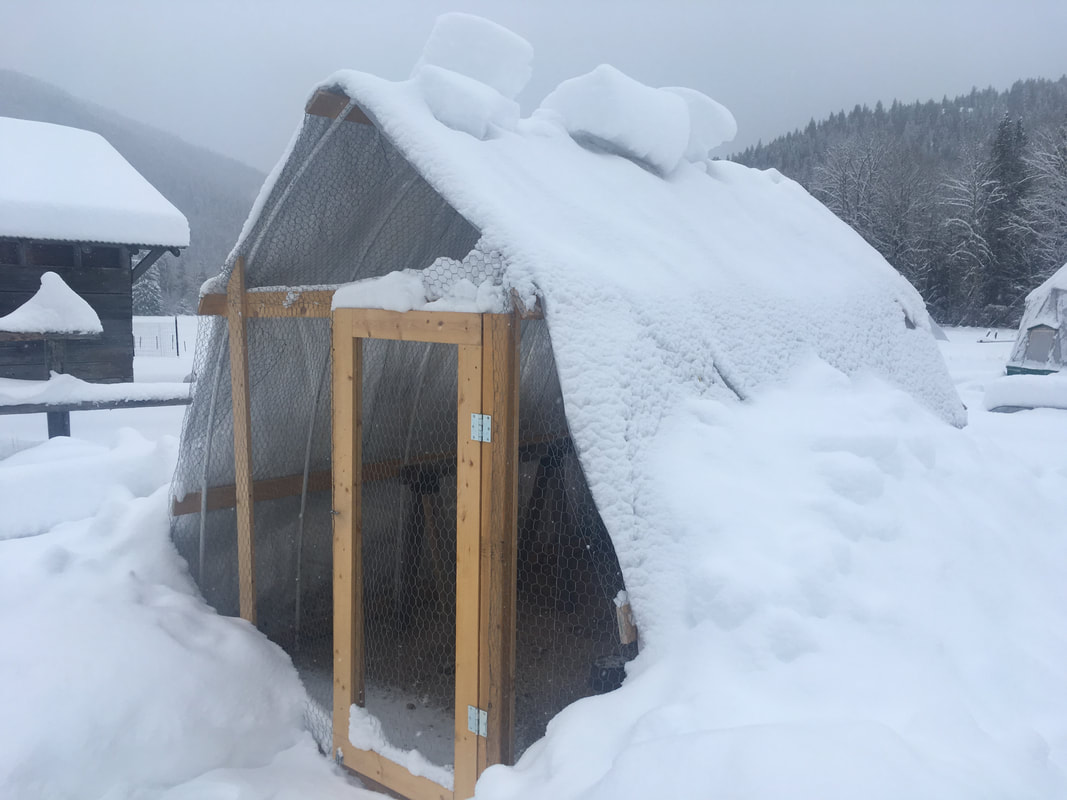
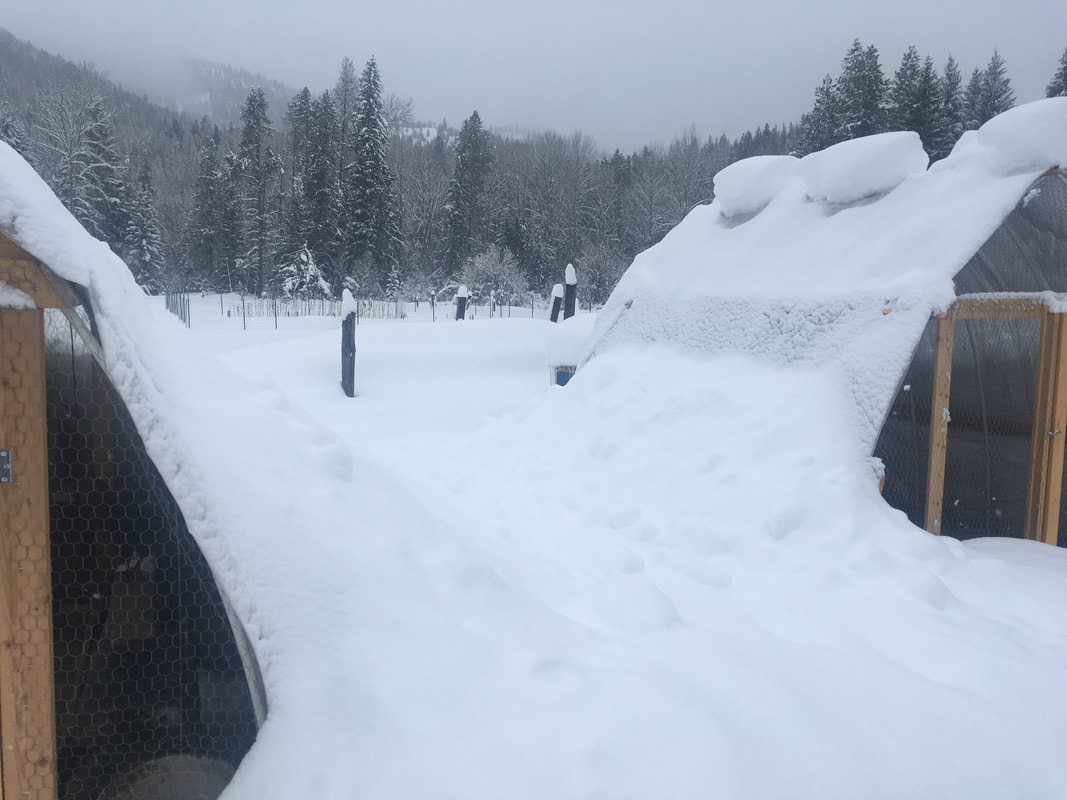
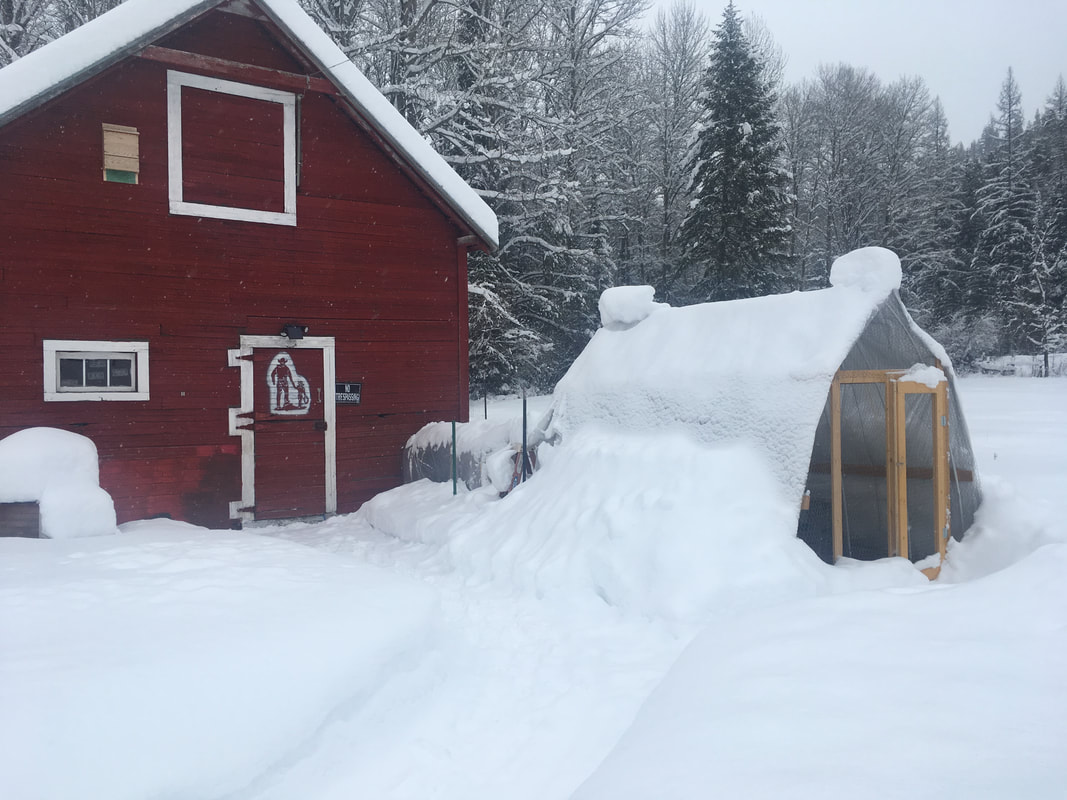
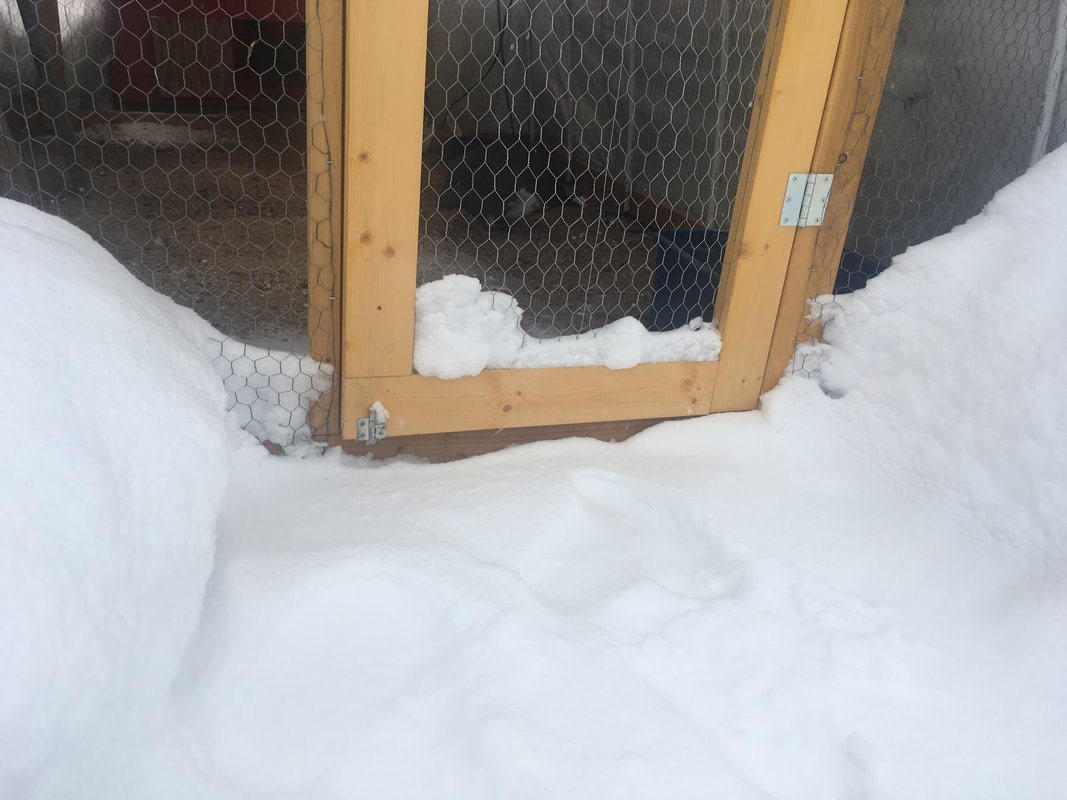
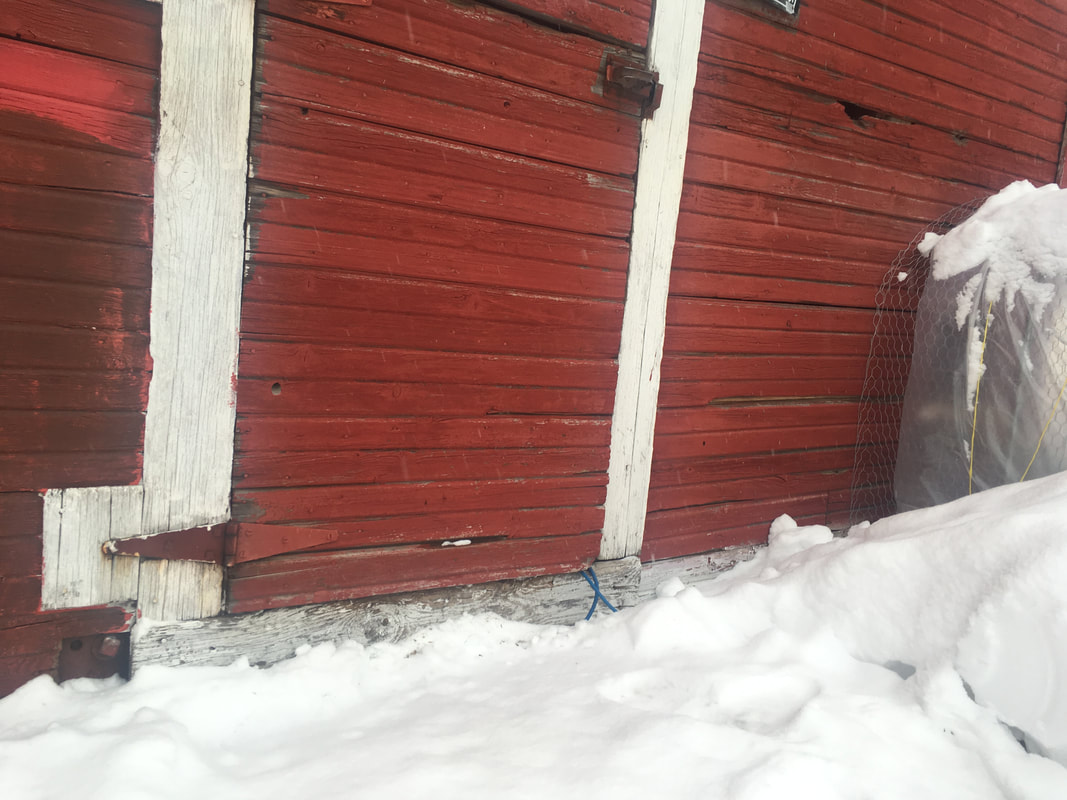
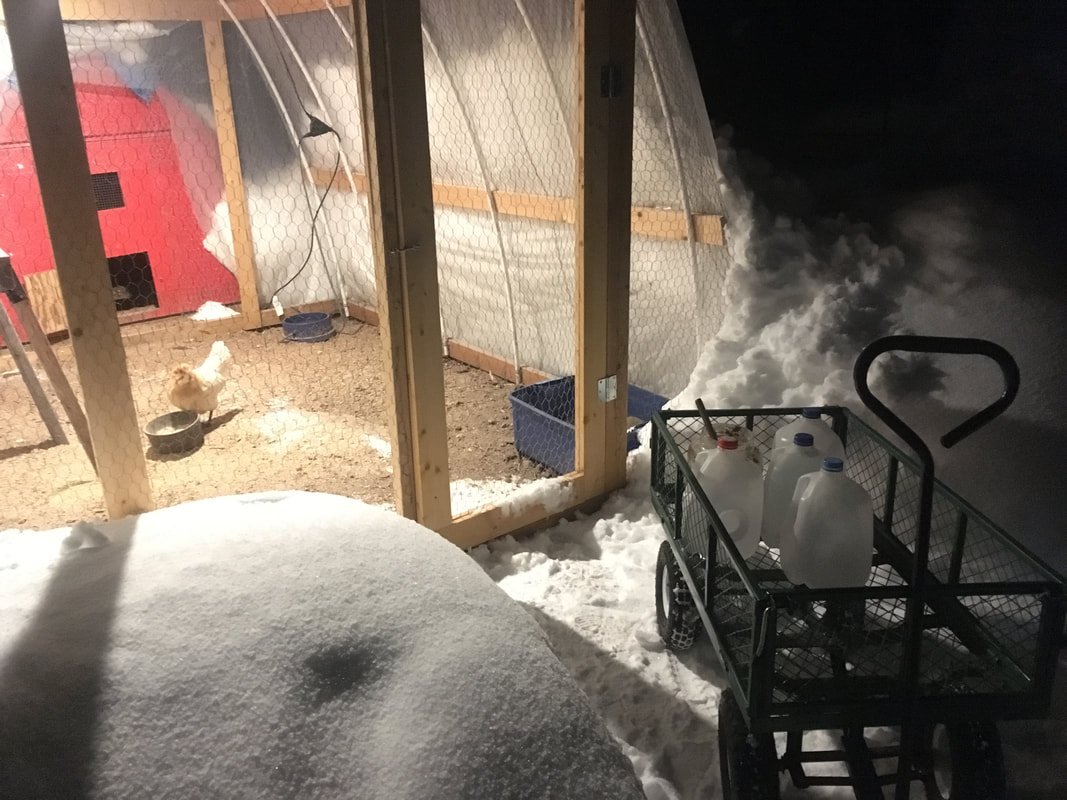
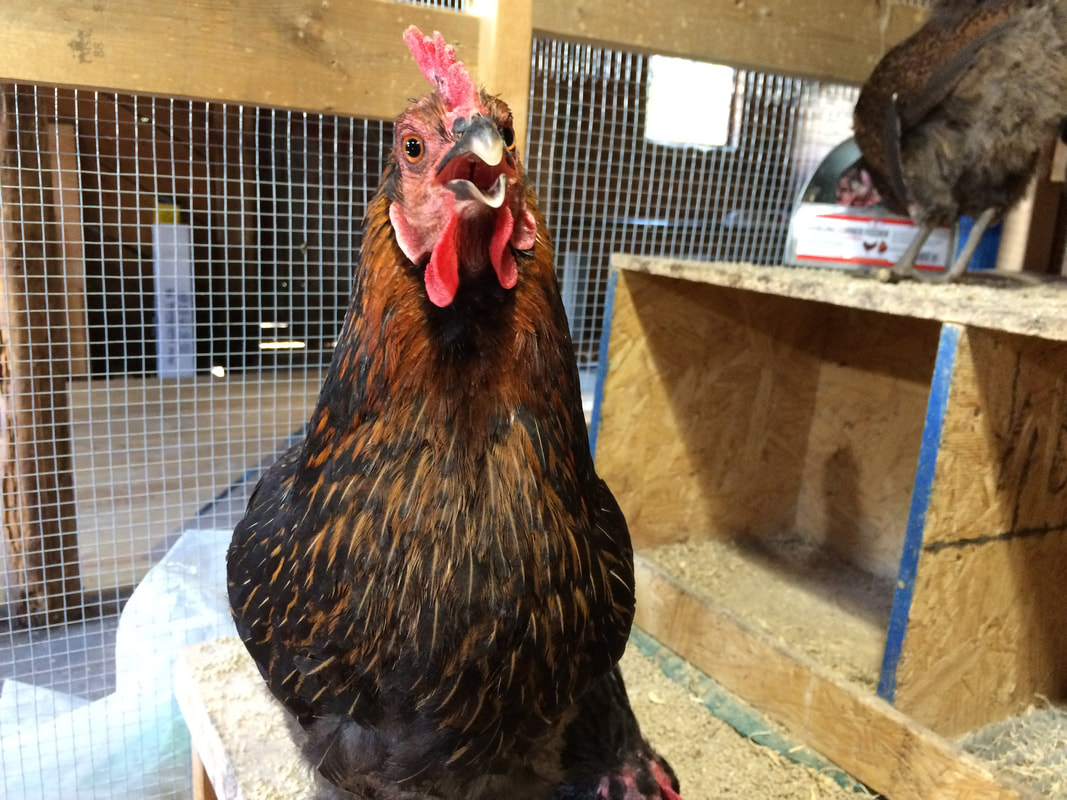
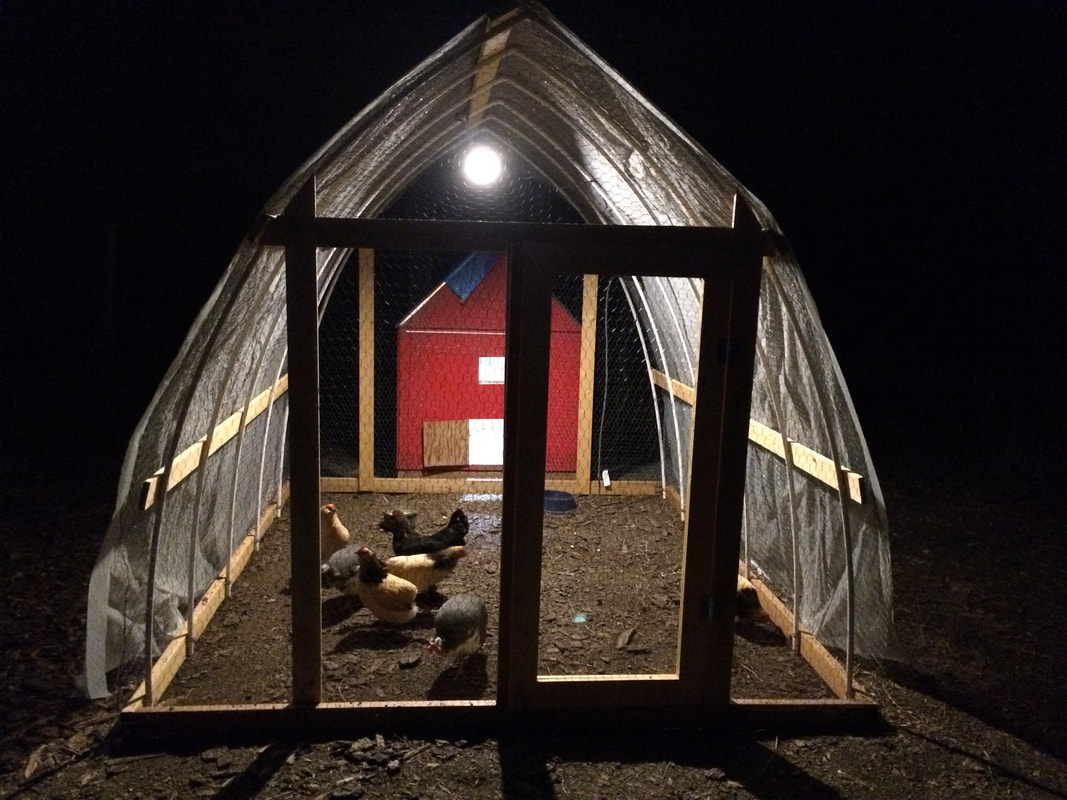
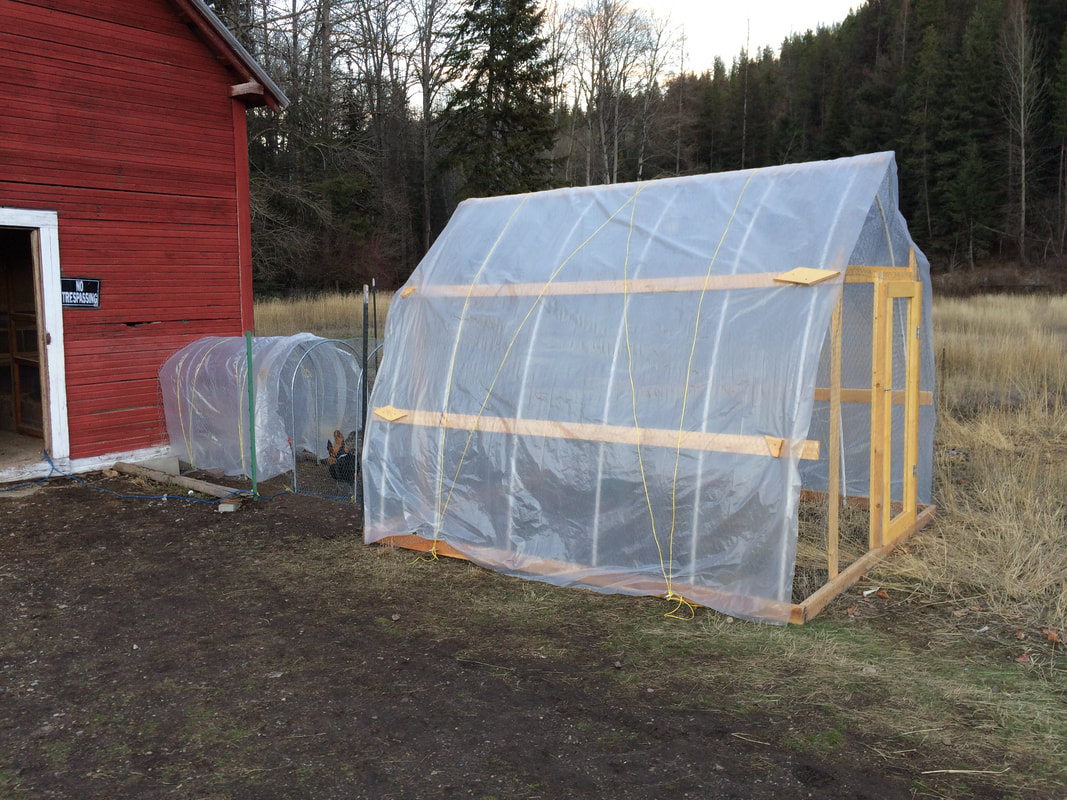
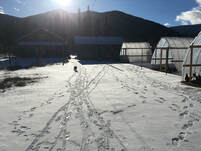
 RSS Feed
RSS Feed